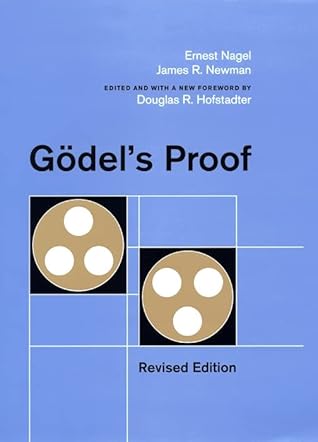More on this book
Community
Kindle Notes & Highlights
A Profile of Mathematical Logic by Howard DeLong—a book that had nearly the same electrifying effect on me as Gödel’s Proof did in 1959.
In this shockingly bold manner, Gödel stormed the fortress of Principia Mathematica and brought it tumbling down in ruins. He also showed that his method applied to any system whatsoever that tried to accomplish the goals of Principia Mathematica. In effect, then, Gödel destroyed the hopes of those who believed that mathematical thinking is capturable by the rigidity of axiomatic systems, and he thereby forced mathematicians, logicians, and philosophers to explore the mysterious newly found chasm irrevocably separating provability from truth.
Gödel’s great stroke of genius—as readers of Nagel and Newman will see—was to realize that numbers are a universal medium for the embedding of patterns of any sort, and that for that reason, statements seemingly about numbers alone can in fact encode statements about other universes of discourse. In other words, Gödel saw beyond the surface level of number theory, realizing that numbers could represent any kind of structure. The analogous Gödelian leap with respect to computers would be to see that because computers at base manipulate numbers, and because numbers are a universal medium for the
...more
The axiomatic method consists in accepting without proof certain propositions as axioms or postulates (e.g., the axiom that through two points just one straight line can be drawn), and then deriving from the axioms all other propositions of the system as theorems. The axioms constitute the “foundations” of the system; the theorems are the “superstructure,” and are obtained from the axioms with the exclusive help of principles of logic.
it called attention in a most impressive way to the fact that a proof can be given of the impossibility of proving certain propositions within a given system.
The traditional belief that the axioms of geometry (or, for that matter, the axioms of any discipline) can be established by their apparent self-evidence was thus radically undermined. Moreover, it gradually became clear that the proper business of pure mathematicians is to derive theorems from postulated assumptions, and that it is not their concern whether the axioms assumed are actually true.
the validity of mathematical demonstrations is grounded in the structure of statements, rather than in the nature of a particular subject matter.
the sole question confronting the pure mathematician (as distinct from the scientist who employs mathematics in investigating a special subject matter) is not whether the postulates assumed or the conclusions deduced from them are true, but whether the alleged conclusions are in fact the necessary logical consequences of the initial assumptions.
Russell’s famous epigram: pure mathematics is the subject in which we do not know what we are talking about, or whether what we are saying is true.
intuition is not a safe guide: it cannot properly be used as a criterion of either truth or fruitfulness in scientific explorations.
Like Molière’s Monsieur Jourdain, who spoke prose all his life without knowing it, mathematicians have been reasoning for at least two millennia without being aware of all the principles underlying what they were doing. The real nature of the tools of their craft has become evident only within recent times.
very general and deep insight that lies at the heart of Gödel’s discovery: typographical properties of long chains of symbols can be talked about in an indirect but perfectly accurate manner by instead talking about the properties of prime factorizations of large integers. This is what we mean by the phrase “the arithmetization of meta-mathematics.”
The point, then, is that Gödel’s results are not due to some odd defect in the specific system PM; they are applicable to any system that incorporates the arithmetical properties of the cardinal numbers, including addition and multiplication.
It does mean that the resources of the human intellect have not been, and cannot be, fully formalized, and that new principles of demonstration forever await invention and discovery. We have seen that mathematical propositions which cannot be established by formal deduction from a given set of axioms may, nevertheless, be established by “informal” meta-mathematical reasoning. It would be irresponsible to claim that these formally indemonstrable truths established by meta-mathematical arguments are based on nothing better than bare appeals to intuition.
TURING, A. M. “Computing machinery and intelligence,” Mind, Vol. 59 (1950), pp. 433–460.


